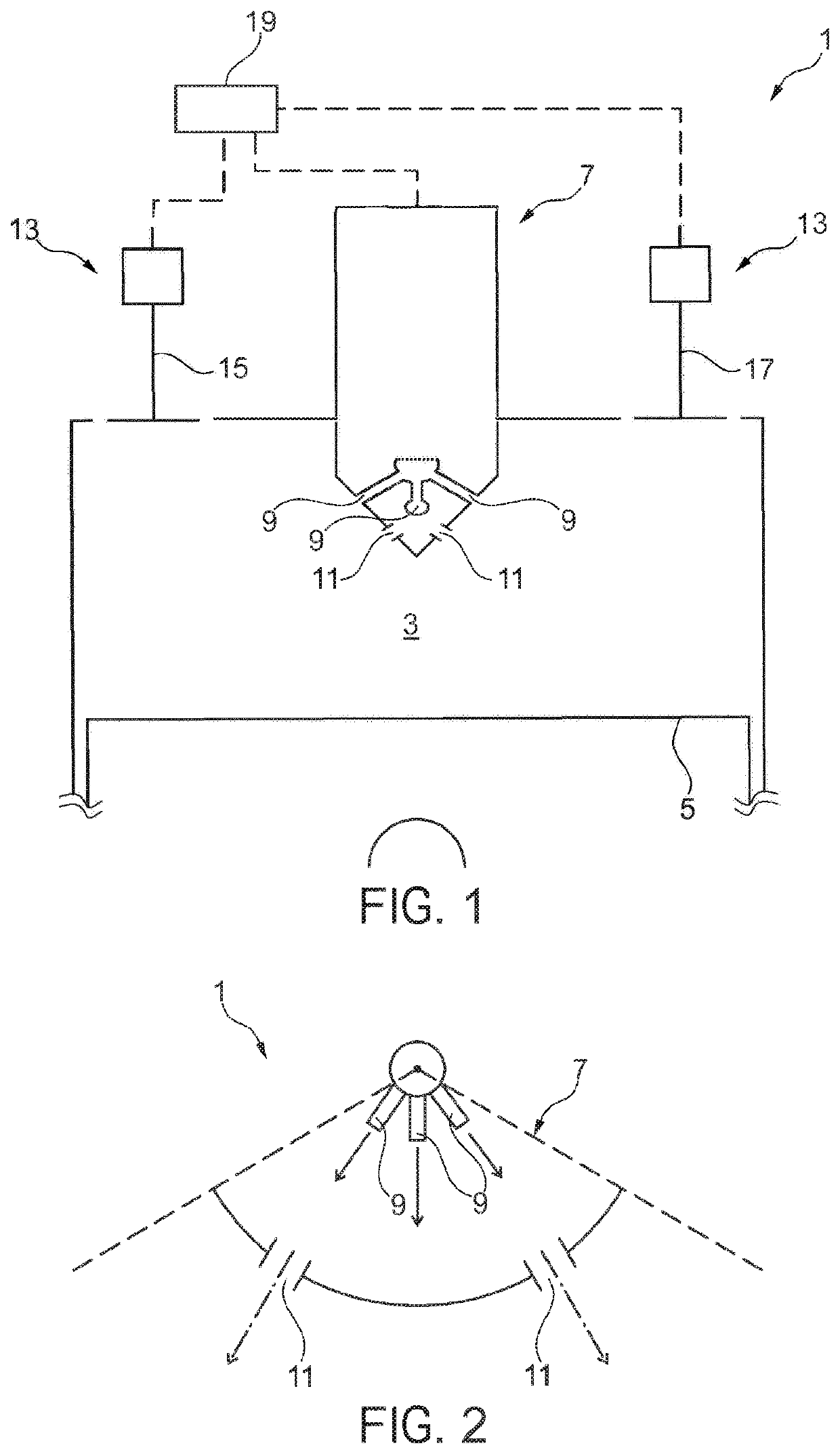Method for operating an internal combustion engine, dual fuel injector device, and internal combustion engine designed for carrying out such a method
a dual fuel injector and internal combustion engine technology, applied in the direction of fuel supply apparatus, fuel system, electrical control, etc., to achieve the effect of reducing emissions
- Summary
- Abstract
- Description
- Claims
- Application Information
AI Technical Summary
Benefits of technology
Problems solved by technology
Method used
Image
Examples
Embodiment Construction
[0035]FIG. 1 is a schematic representation of an embodiment of an internal combustion engine 1 with a combustion chamber 3. Internal combustion engine 1 may include a plurality of combustion chambers 3. The combustion chambers 3 may be identical. It is possible that internal combustion engine 1 includes four, six, eight, ten, twelve, fourteen, sixteen, eighteen or twenty combustion chambers 3.
[0036]Internal combustion engine 1 may be a reciprocating piston engine, wherein in combustion chamber 3, a piston 5 is movable in a reciprocating motion.
[0037]Internal combustion engine 1 has a dual fuel injector device 7 which is configured to introduce a combustible fuel on the one hand and an ignition oil on the other hand directly into combustion chamber 3. The dual fuel injector device 7 includes a first number of first bores 9 to deliver a plurality of combustible fuel jets—one combustible fuel jet from each first bore 9. Dual fuel injector device 7 moreover includes a second number of s...
PUM
 Login to View More
Login to View More Abstract
Description
Claims
Application Information
 Login to View More
Login to View More - R&D
- Intellectual Property
- Life Sciences
- Materials
- Tech Scout
- Unparalleled Data Quality
- Higher Quality Content
- 60% Fewer Hallucinations
Browse by: Latest US Patents, China's latest patents, Technical Efficacy Thesaurus, Application Domain, Technology Topic, Popular Technical Reports.
© 2025 PatSnap. All rights reserved.Legal|Privacy policy|Modern Slavery Act Transparency Statement|Sitemap|About US| Contact US: help@patsnap.com


